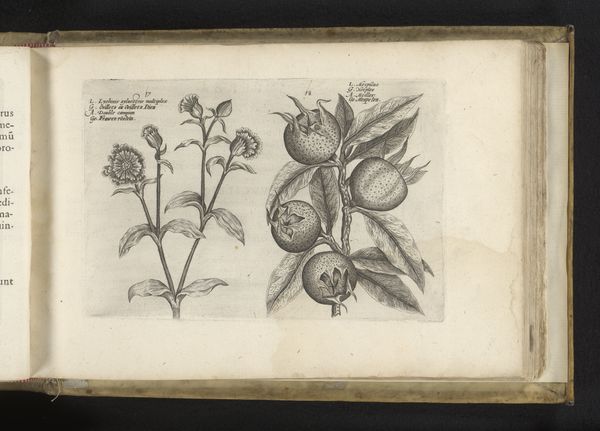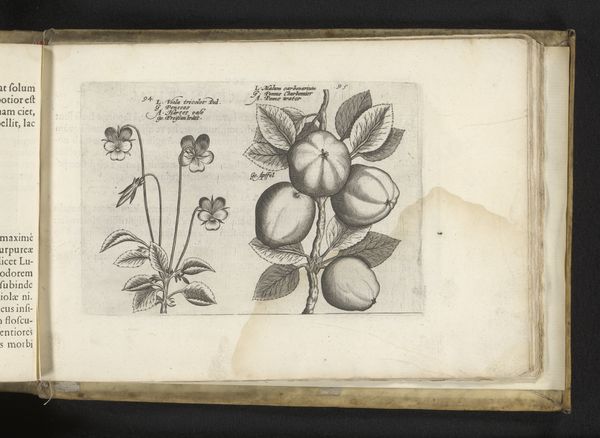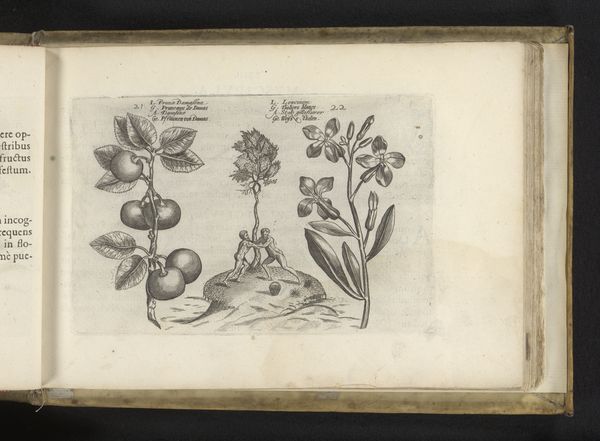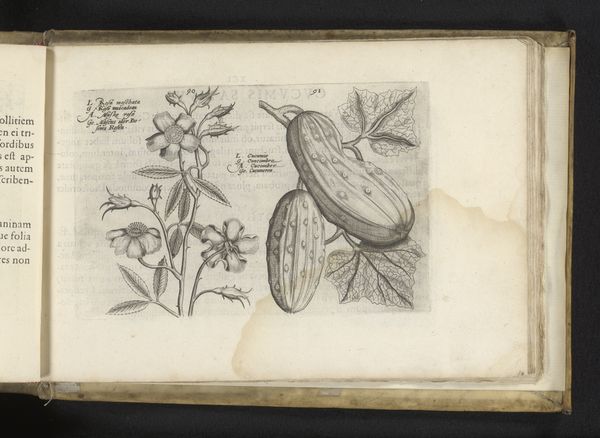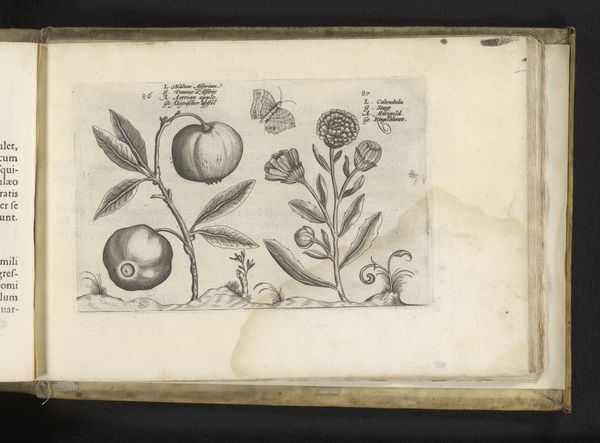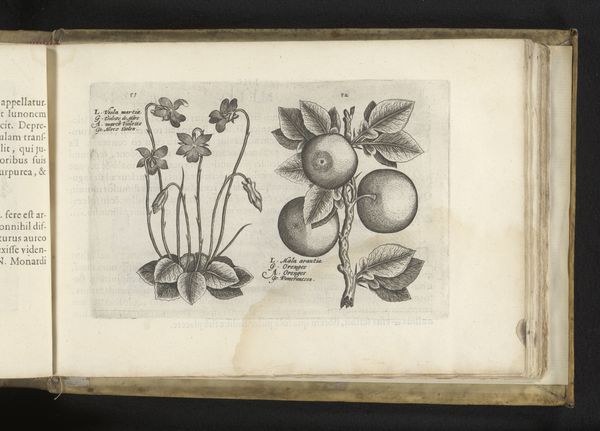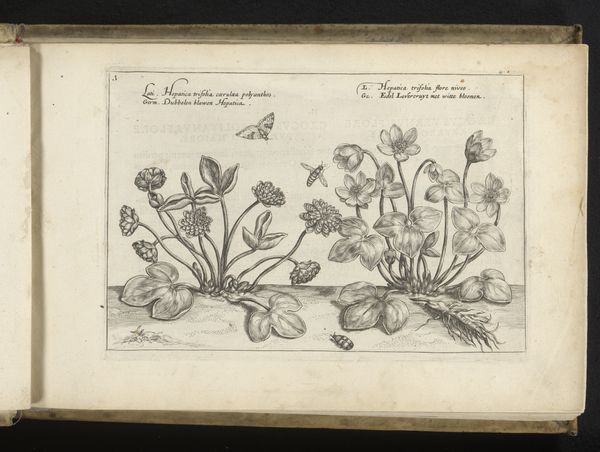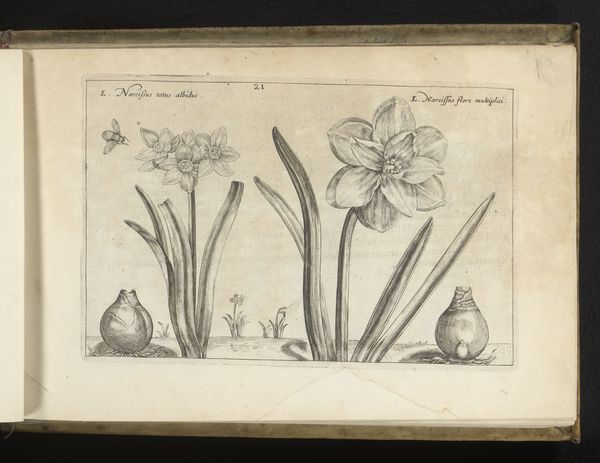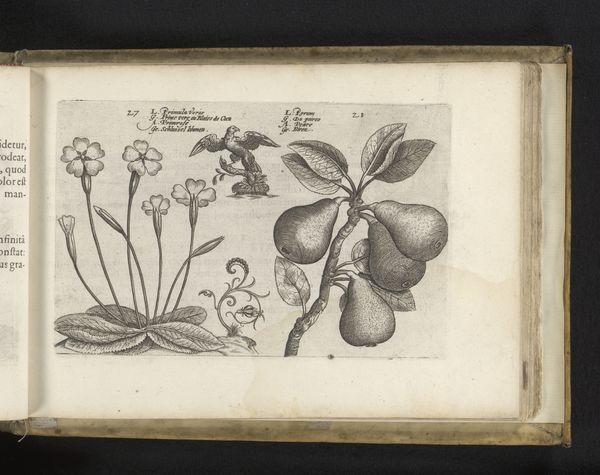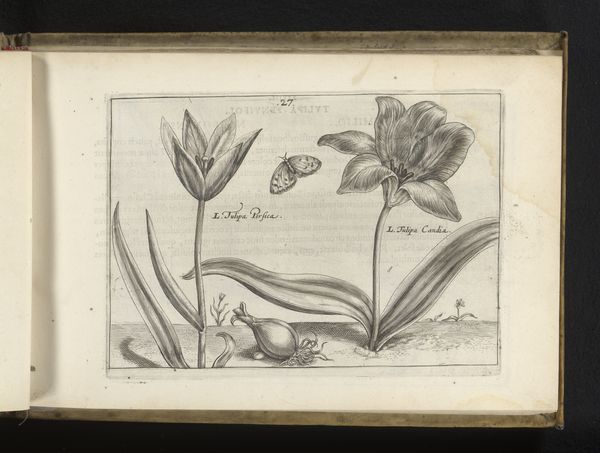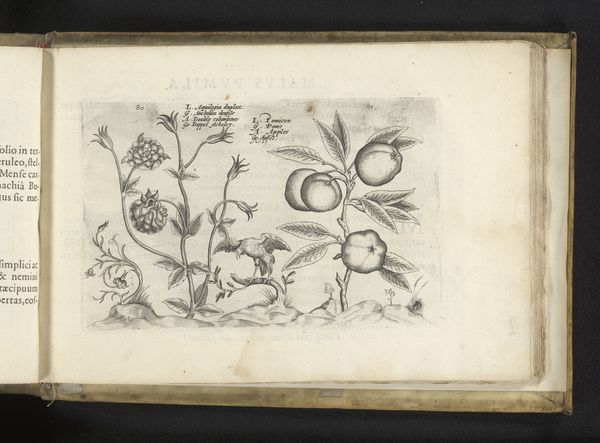
drawing, print, paper, engraving
#
drawing
# print
#
paper
#
northern-renaissance
#
engraving
Dimensions: height 136 mm, width 195 mm
Copyright: Rijks Museum: Open Domain
Here we see a copperplate engraving from the early 17th century by Crispijn van de Passe the Younger, depicting a quince and a wallflower. These botanical illustrations, rendered with scientific precision, carry symbolic weight tied to love, marriage, and domestic virtue. Consider the quince: revered in antiquity, it was sacred to Aphrodite, the goddess of love. Brides often consumed quince to ensure a fruitful union. Yet, its tartness also symbolizes the bittersweet aspects of love. In contrast, the modest wallflower, nestled against stony walls, signifies fidelity and lasting affection. Wallflowers were emblems of constancy and were often exchanged between lovers as tokens of devotion. These symbols are not confined to this era; they echo through centuries. The quince appears in Renaissance paintings as a symbol of abundance, while the wallflower adorns medieval tapestries, representing unwavering loyalty. Such symbols recur, their meanings transformed and reinterpreted, revealing how collective memory shapes our understanding of the world. The emotional resonance of these emblems persists, reminding us of the enduring human quest for love and connection.
Comments
No comments
Be the first to comment and join the conversation on the ultimate creative platform.
